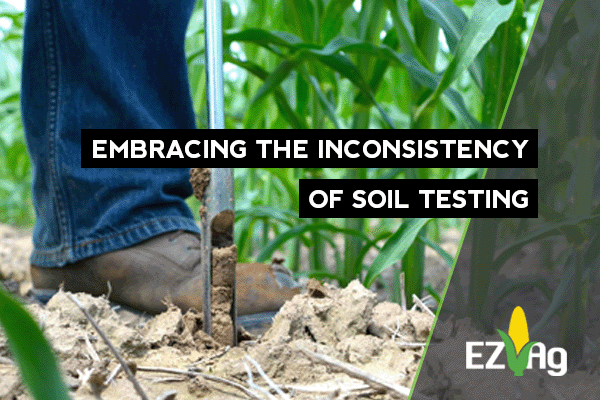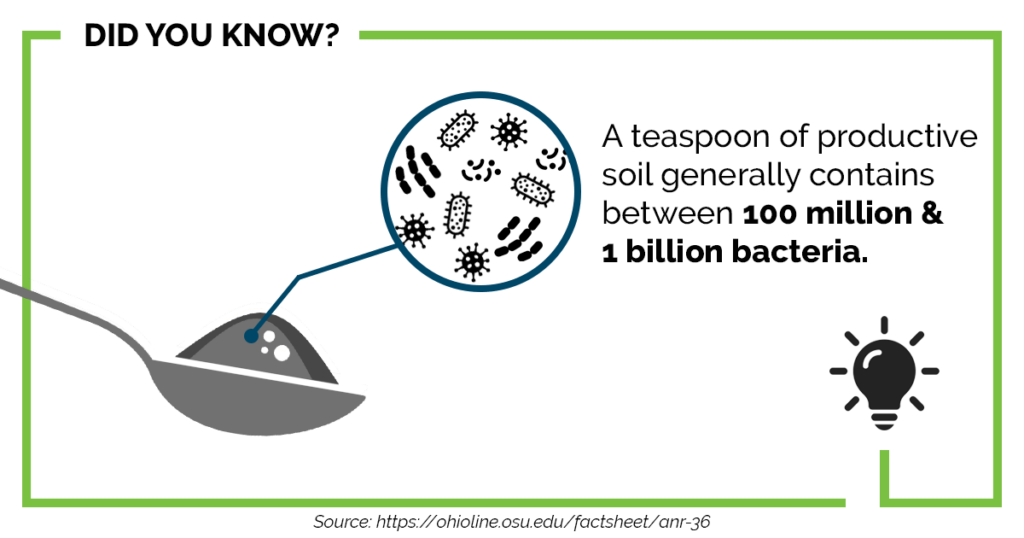I hate to break it to you but effective fertility plans are not one-size-fits all. A fertility plan that helps you produce a top crop is specific to your fields, the crops you grow, and a variety of additional factors that can fluctuate and change over time.

For years the main emphasis has been on N, P, and K which are considered the macronutrients, but are they really the most important? Each cropping system and every field has a little different answer to that question. And understanding what is really the most important nutrient, or nutrient application to focus on is important when developing your Max Yield System fertility plans.
Sorting through this level of complexity and nuance is impossible to fit into a single EZ Ag blog post, so I’m kicking off a new series called, “A Hands-On Approach to Fertility.” Over the next three weeks I’ll cover:
- Why soil testing is key to understanding crop needs, even when test results are inconsistent
- The fundamentals of a fertility plan, including a unique view on starter fertilizer as a crop starter, not a significant fertilizer input
- And how cutting-edge biologicals like Pivot Bio’s Proven 40 can help you reevaluate and enhance your nitrogen plan
So let’s dig into our first topic: soil testing.
Embracing the Inconsistency of Soil Tests
One of the biggest misconceptions about soil testing is that they should be consistent year over year, or from one sampling event to another. Understanding how soil samples are pulled, where they are pulled, how they are analyzed, and what the results mean is an important step in developing a fertility plan, getting consistent results year over year is not!
Think about it – how difficult is it to repeat anything year after year in farming with the exception of an A-B line? Extremely difficult! And hey, let’s give credit where credit is due: the sub-inch accuracy of a GPS system can help improve the repeatability of the soil sampling process and create a consistent location to sample from. However, the error is typically found in the fact that sampling consistently at the same sampling depth, timing, temperature, or moisture is nearly impossible. And why would these aspects matter?

Each of these aspects matter because the attributes of soil are constantly changing. Soil is a living organism – or really soil is made up of billions of living organisms – and because of this and the differences in sampling location, depth, timing, temperature, and moisture, that we cannot control, our results will also constantly be changing. So embrace the inconsistency! And pull soil samples – it is the most cost effective input on your farm!
Taking “Guesswork Out of Your Fertility Plan”
First I told you to embrace the inconsistency that is the soil test, and now I’m going to tell you to use those results to inform your Max Yield System fertility plan. I know, it seems backwards but hang in there with me.
When looking at soil testing results, you have to account for the millions of living microbes in the soil profile that are constantly changing the soil analysis by converting plant-available forms of nutrients to unavailable and vice versa. These processes naturally occur in your soil and are affected by the timing, temperature, and moisture content of the soil at sampling time. And why does this matter in relation to your fertility plan? These processes are also impacted by the inputs applied to your fields as well.
For example: When you apply sulfur, you don’t only impact the sulfur quantity in your soil profile. This application can also cause other changes to soil pH, and cause micronutrients like zinc and iron to become more available, thus showing up in higher quantities in your soil sample. Understanding some of the effects of your fertilizer applications will help you develop the perfect plan.
Making the Most Out of Your Soil Testing Efforts
If you already utilize soil testing as part of your annual practices. You can dial in the data you get from this practice by evaluating how you conduct soil tests on your own operation. I even recorded a quick video on this very topic that you can check out here if you’d like to learn more.
At the end of the day, your ability to understand your soil profile is a necessity when creating a fertility plan. A friend of mine who’s in the business of pulling soil samples uses the slogan, “If you don’t test, it’s just a guess,” and I couldn’t agree more with this notion. So I challenge you, embrace the inconsistency, remove the guesswork, and dial in your fertility plan with one of the most cost effective inputs you can purchase for your operation: the soil test.
This concludes Part I of our three-part series, “A Hands-On Approach to Soil Fertility.” Check back next week for the second installment!

Leave a Reply